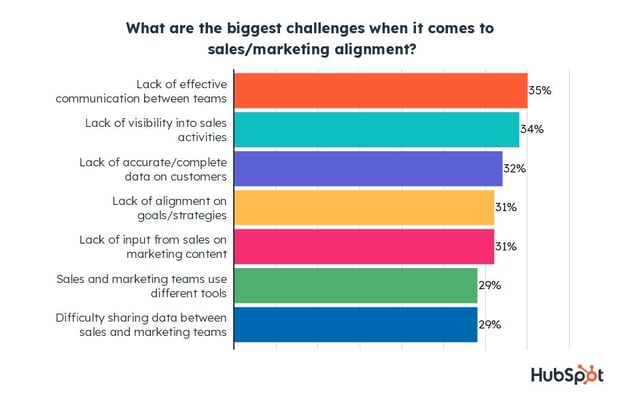3 Signs Your Company & Marketing Teams are Facing a Crisis of Disconnection
Let’s face it – companies have a unique set of challenges ahead of them in 2023.
We’re all aware of the obvious ones. Adjusting to a post-pandemic world, a looming recession, geo-political tensions, the list goes on.
But while we plan around these macro events that are largely out of our control, a crisis brews within many companies.
It goes unseen because this crisis isn’t making global headlines – it hides in the spaces between us.
Between two co-workers who have never met in person. Between the countless apps central to our jobs that don’t integrate with one another. Between marketers and their customers, who understand and trust each other less, despite having more information than ever.
So how do you fix a crisis made up of invisible factors, many of which we don’t (yet) measure?
You start by calling it out for what it is – a crisis of disconnection.
The next step is figuring out whether it’s happening in your organization, and connecting the broken pieces.
Here are three tell-tale signs to watch out for.
3 Signs Your Company is Disconnected
1. Your marketing data isn’t fully integrated with the tools you use.
HubSpot researchers have found that 31% of marketers don’t have a single source of truth for all their marketing data — and only 27% say their marketing data is fully integrated with the tools they use.
Not only does this waste marketers’ time as they manually collate data from various sources and plug it into disparate tools, but it harms data quality, leaving marketers with an incomplete story.
With patchy data, marketers struggle to understand and compare the performance of marketing activities across various channels.
Even worse, disconnected data makes it harder for marketers to understand and locate their target audience, so it’s no surprise many companies are saying their usual marketing channels are becoming less effective. This brings us to disconnection symptom #2.
2. You aren’t seeing the same ROI you used to from marketing efforts.
If marketers don’t have the data they need on their target audience, the ROI of their marketing activities suffers. And this is already happening — in our survey of professionals tracking Customer Acquisition Costs, 49% say CAC has gone up from 2021 to 2022.
It’s not so much that the marketing channels you’ve been using became less effective, but that consumers’ lives have changed drastically over the past few years. Their habits, preferences, and relationships with brands will continue to shift throughout 2023, and it’s up to marketers to keep up.
Marketers need holistic, real-time data on consumer attitudes/behaviors, especially as major global events like pandemics or recessions become more common.
This data is key for marketers to understand their evolving audience and pivot their marketing activities and messaging in alignment with what their customers are experiencing.
Integrating your data and tools opens the door to connecting with your customers in a way that helps your marketing strategy flourish, regardless of the channels you use.
3. Your teams (and their data) work in silos.
Let’s start with the human side of connection – has your company offered employees the chance to meet in person? How often does your team interact in fun, non-work-related settings? Do employees get the chance to get to know people from other teams?
Not only are these crucial to employee satisfaction and morale, but incentivizing employees to interact leads to unexpected, spontaneous ideas and collaborations that used to happen naturally before remote/hybrid work models took over.
Of course, once they get to know one another, teams need to be able to share data to collaborate effectively.
Sadly, 22% of marketers say data isn’t accessibly stored at their company, and the same amount struggle to get the data they need from other teams.
Even when it comes to alignment between sales and marketing teams, just 31% of marketers say the two are strongly aligned at their company.
The biggest challenges to sales and marketing alignment also point to disconnection. Among the top obstacles are a lack of accurate/complete customer data, the fact that sales and marketing teams use different tools, and difficulty sharing data between sales and marketing teams.

Where to Go From Here
If any of these signs of disconnection resonate with you, know that you aren’t alone. We’ve dedicated an entire blog series to calling out the crisis of disconnection and laying out the steps to fix it.
We won’t sugarcoat it — there are significant challenges ahead. The playbook for creating meaningful connections will likely change often, along with the lives of our employees and consumers. But isn’t that how it should be?
To read more on The Crisis of Disconnection, check out our previous posts and research:
– A Crisis of Disconnection: 3 Workplace Trends Slowing Growth
– A Crisis of Disconnection: Why it’s Time to Rethink Your Growth Strategy
– Solving the Crisis of Disconnection: How to Unite Your Brand Around Growth [Expert Tips & Data]
Fully informed on disconnection crises and looking for tools to help your company get better connected? Check out HubSpot tools like our free CRM.
![]()



